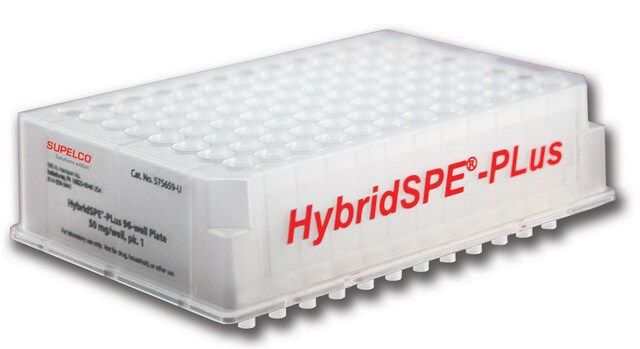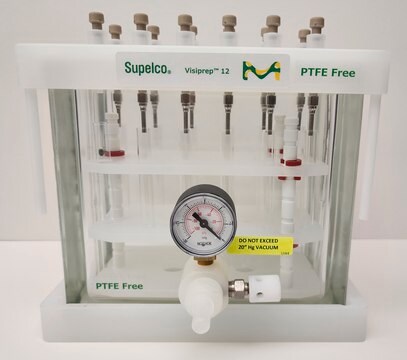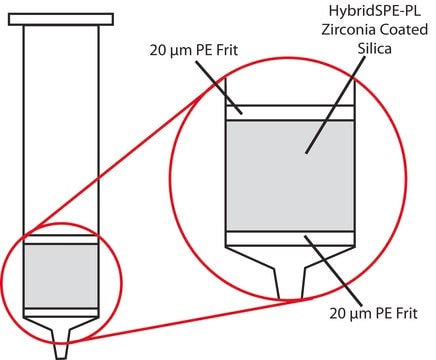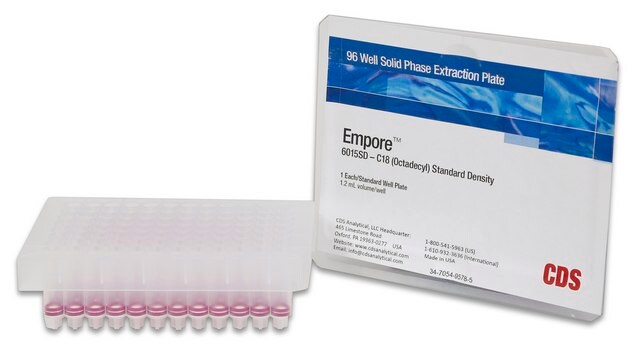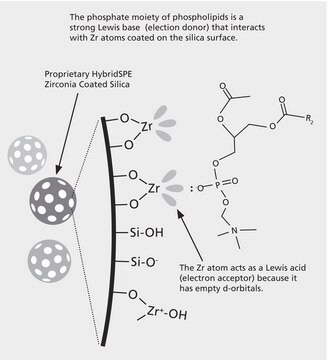575659-U
HybridSPE®-PLus 96-Well Plate
volume 2 mL, pk of 1 ea
Synonym(s):
HybridSPE®-PLus
About This Item
Recommended Products
description
96-well Plate
Quality Level
product line
HybridSPE®
composition
bed wt., 50 mg
packaging
pk of 1 ea
technique(s)
solid phase extraction (SPE): suitable
volume
2 mL
matrix active group
zirconia-based phase
Looking for similar products? Visit Product Comparison Guide
Related Categories
General description
Our HybridSPE-PLus products offer the same time-proven chemistry of our traditional HybridSPE-Phospholipid products coupled with manufacturing enhancements that stem from years of production experience. These manufacturing enhancements have allowed us to increase flow consistency and reduce sample hold up volumes, further improving analyte recoveries and assay reproducibility. We invite customers to take advantage of the newest technology; HybridSPE-PLus.
Features and Benefits
- Simple 2-3 step standard methodology analogous to traditional protein precipitation provides simultaneous removal of both proteins and phospholipids
- Unique Lewis acid/base retention mechanism effectively removes phospholipids from both hydrophilic and hydrophobic analytes of interest (unlike competitive chemistries) eliminating phospholipid-induced ion suppression
- Highly reproducible, consistent product performance
- Provides cleaner samples for longer column life and less instrument downtime
- Available in 96-well and 1 mL cartridge dimensions
Legal Information
Storage Class Code
11 - Combustible Solids
WGK
WGK 3
Flash Point(F)
Not applicable
Flash Point(C)
Not applicable
Choose from one of the most recent versions:
Already Own This Product?
Find documentation for the products that you have recently purchased in the Document Library.
Customers Also Viewed
Articles
This article highlights the impact that sample matrix effects can have on LC/MS response and discusses two novel approaches to reduce it.
Using HybridSPE-Phospholipid, Ascentis Express, and Other LC-MS Workflow Components
Protocols
Immunoassay-based methods for digitoxin or digoxin exist, but are time consuming, labor intensive, and not selective due to similarities in their chemical structures.
LC/MS/MS Analysis of Interacting Cardiac Drugs Digoxin, Quinidine, Amiodarone and Verapamil on Titan™ C18
Related Content
Small molecules are ions and compounds of molecular weight typically less than 900 daltons. These compounds can be effectively separated and analyzed by HPLC, UHPLC and LC-MS using mainly silica particles or monolithic stationary phases with a broad range of column chemistries (modifications).
Small molecules are ions and compounds of molecular weight typically less than 900 daltons. These compounds can be effectively separated and analyzed by HPLC, UHPLC and LC-MS using mainly silica particles or monolithic stationary phases with a broad range of column chemistries (modifications).
Small molecules are ions and compounds of molecular weight typically less than 900 daltons. These compounds can be effectively separated and analyzed by HPLC, UHPLC and LC-MS using mainly silica particles or monolithic stationary phases with a broad range of column chemistries (modifications).
Small molecules are ions and compounds of molecular weight typically less than 900 daltons. These compounds can be effectively separated and analyzed by HPLC, UHPLC and LC-MS using mainly silica particles or monolithic stationary phases with a broad range of column chemistries (modifications).
Chromatograms
application for HPLC, application for SPEOur team of scientists has experience in all areas of research including Life Science, Material Science, Chemical Synthesis, Chromatography, Analytical and many others.
Contact Technical Service
